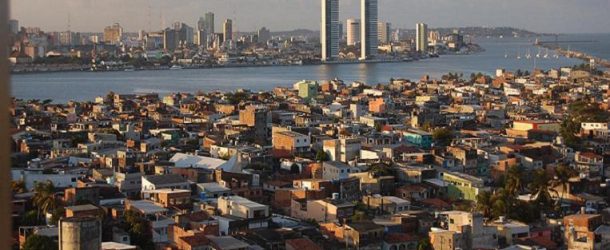Introduction
Various terms have been employed in order to define developing countries.[1] Using Alfred Sauvy’s terminology, “Third World” (tiers monde)[2] was a very popular term in defining developing countries during the Cold War. “Non-alignment” was also a similar term that became influential together with the emergence of “Non-Aligned Movement”[3] in 1955 Bandung Conference. More recently, terms like “underdeveloped countries” or “emerging markets” have also been used interchangeably in addition to “developing countries”, since the old “Third World” term became archaic[4] especially after the end of Cold War.[5] The term “underdeveloped countries” was not preferred, since it might offend developing countries. Thus, “developing countries” became the official title for countries that have been struggling to catch up developed countries.
Criteria
Which criteria to be applied in order to classify countries has always been a controversy in “Third World” discussions. The most important issues can be listed as; military power, nuclear energy and nuclear power, economic size (GDP), economic development (GDP per capita), membership to international organizations (EU, NATO), education level, democratic quality and human development. A country like China could be very developed in some aspects (economic size, military power), but could be seen as underdeveloped in some other aspects (GDP per capita, democratic quality). Likewise, a country like Switzerland could be defined as the best country in terms of economic development, democratic quality and human development, but could not be very influential in terms of military and nuclear power. Saudi Arabia and Gulf states are other interesting examples with their poor democratic development but good performance in terms of economy. Thus, both hard power and soft power issues should be taken into consideration in classifying countries.
Characteristics
B.C. Smith, in his book Understanding Third World Politics[6], tried to determine the basic characteristics of developing countries.
1-) Political independence: Most of the developing countries have colonial backgrounds and their political independence is relatively new especially compared to developed countries. Colonialism and imperialism had mixed consequences over developing countries; the exploitation of resources and labor force as well as cultural domination on the one hand, better health services and a bureaucratic knowledge and experience (the case of British effect in Indian bureaucracy for instance) on the other.
2-) Average incomes: Average incomes in developing countries are low compared to developed countries. This can be measured by GDP per capita statistics[7]. Stagnation, inflation and unemployment are common problems in developing countries in addition to poor life standards due to low average incomes.
3-) Industrialization: Developing countries’ industrialization level is low and their economies are often based on agricultural production and services. Labour intensive jobs are more common and technological production is almost non-existent.
4-) Integration into the world economy: A developing country is typically characterized by a high level of dependence on the export of a very small number of commodities. Their markets are dominated by products from developed countries and their share in the world economy is very low. Thus, developing countries are placed at the periphery of the world economy.
5-) Social well-being and human development: Social well-being and human development is low in developing countries. There is also a big gap between rich and poor and their ability to take advantage of social qualities. UNDP human development index[8] is a clear proof of development level between developed and developing countries.
6-) Militarization: Militarization is also a common problem in developing countries. Militaries of developing countries might have traditionally important roles as in the case of Turkey and this might create additional problems after transition into democracy. High military spending and militarist culture might also be a serious problem in developing countries.
7-) Religious fundamentalism: Religious fundamentalism fueled with hatred towards the Western and their colonial background create a very dangerous combination in developing countries. In the Islamic world, this might create terrorist organizations like ISIS or Al Qaeda or fundamentalist governments. In various other developing countries, anti-imperialist Marxist guerilla movements became very popular in the same vein.
8-) Mixed economy: Developing countries often implemented both capitalist and socialist methods of development in order to differentiate themselves from first world (capitalist) and second world (socialist) countries during the Cold War. One crucial aspect that directed developing countries to use ISI (import substitution industrialization) policies is the lack of capital in local bourgeoisie. Thus, state-led initiatives had considerable success and place in developing countries’ economies. As they get more developed, these countries became more liberal and decreased the stateness level in the economy. For instance, after a series of privatizations in the 1990s, Turkey’s former and first female Prime Minister Tansu Çiller said that “they were able to make the last communist state to collapse”.
9-) Anti-imperialism: Anti-imperialism has been a common characteristic of developing countries. Since most of these countries had been colonized or subjected to imperialism in the past, they often have strong anti-imperialist legacy in their popular national ideology and foreign policy traditions. However, during the Cold War many of these countries are sided with USA or USSR and their anti-imperialist tradition have changed considerably.
10-) A new international order: Many of the developing countries are pushing for a new international order as they are not happy of the current structure of the UN Security Council having 5 permanent members (USA, Russia, China, France, United Kingdom). The lack of permanent member countries from South American, African and Oceania continents is the major problem in their perspective.
Assist. Prof. Dr. Ozan ÖRMECİ
SOURCES
- Canbolat, İbrahim S. (2013), Gelişmekte Olan Ülkeler: Küresel Politik ve Ekonomik Çıkar İlişkilerindeki Konumları, Alfa Aktüel Yayınları.
- Smith, B. C. (1996), Understanding Third World Politics, Macmillan Press Ltd.
[1] Prepared as a course document for undergraduate students.
[2] https://en.wikipedia.org/wiki/Third_World.
[3] https://en.wikipedia.org/wiki/Non-Aligned_Movement.
[4] https://mic.com/articles/107686/why-you-shouldn-t-call-poor-nations-third-world-countries#.7Dlo4B4nY.
[5] İbrahim S. Canbolat (2013), Gelişmekte Olan Ülkeler: Küresel Politik ve Ekonomik Çıkar İlişkilerindeki Konumları, Alfa Aktüel Yayınları.
[6] Available at Amazon: https://www.amazon.com/Understanding-Third-World-Politics-Development/dp/0253221048.
[7] http://data.worldbank.org/indicator/NY.GDP.PCAP.CD.
[8] http://hdr.undp.org/en/content/human-development-index-hdi.




















































